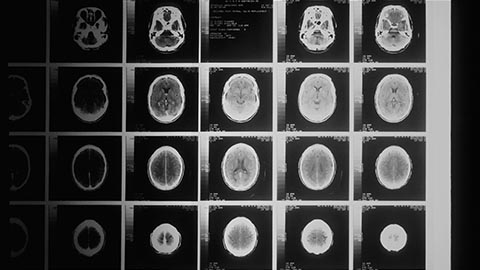CT scans for Diagnostic imaging
A CT scan, or computerised tomography, is a form of diagnostic imaging that uses various x-rays to build a black and white cross section of a part of the body. It can be used to identify or to monitor various medical conditions, such as heart conditions and brain tumours.

What is a CT scan?
A CAT scan or computerised tomography scan uses multiple X-ray images taken from various angles that are processed through a computer to generate black and white cross-sectional images of different body parts. CT scans offer a more comprehensive view of bones, blood vessels, and soft tissues, surpassing the level of detail of standard X-ray images. These images can also be combined to form 3D images of a specific body area. CT scans are accessible at both hospitals and imaging centers.
What happens during a CT scan?
CT scans typically only last a few minutes, although they can take up to 30 minutes to complete.
During the scan, you lie on a special table that slides into the CT machine, with your head resting on a pillow and possibly being secured to the table for stability.
If your head is being scanned, a head cradle may be used. As the table moves you into the CT machine, a ring composed of an X-ray tube and detectors rotate around you, capturing images of your body without enclosing your entire body simultaneously.
You may hear buzzing and whirring sounds during the scan, while the CT scan technician, also known as a radiographer, communicates with you through an intercom from an adjacent room.
In some situations, you may be administered a contrast dye before the scan to highlight specific tissues, such as blood vessels or intestines, on the images. This dye appears white on the images and blocks X-rays. You may receive the dye as a drink, injection, or enema, with a slight risk of an allergic reaction.
The scan exposes your body briefly to low-dose ionizing radiation, which is more than a standard X-ray because of the more detailed information gathered by the CT scan. The amount of radiation you receive varies depending on how much of your body is scanned. After the scan, you may be advised to rest briefly before returning to your regular activities to ensure that you feel well. If you were given contrast dye, drinking plenty of fluids aids your kidneys in removing the substance from your body.
During the scan, you lie on a special table that slides into the CT machine, with your head resting on a pillow and possibly being secured to the table for stability.
If your head is being scanned, a head cradle may be used. As the table moves you into the CT machine, a ring composed of an X-ray tube and detectors rotate around you, capturing images of your body without enclosing your entire body simultaneously.
You may hear buzzing and whirring sounds during the scan, while the CT scan technician, also known as a radiographer, communicates with you through an intercom from an adjacent room.
In some situations, you may be administered a contrast dye before the scan to highlight specific tissues, such as blood vessels or intestines, on the images. This dye appears white on the images and blocks X-rays. You may receive the dye as a drink, injection, or enema, with a slight risk of an allergic reaction.
The scan exposes your body briefly to low-dose ionizing radiation, which is more than a standard X-ray because of the more detailed information gathered by the CT scan. The amount of radiation you receive varies depending on how much of your body is scanned. After the scan, you may be advised to rest briefly before returning to your regular activities to ensure that you feel well. If you were given contrast dye, drinking plenty of fluids aids your kidneys in removing the substance from your body.
How do I prepare for a CT scan?
Depending on which body part is being scanned, you may need to remove certain clothing and accessories and instead wear a hospital gown for the CT scan. Additionally, you may be required not to eat or drink for a few hours before the scan
Medical centres with this test:
See all medical centres with this test